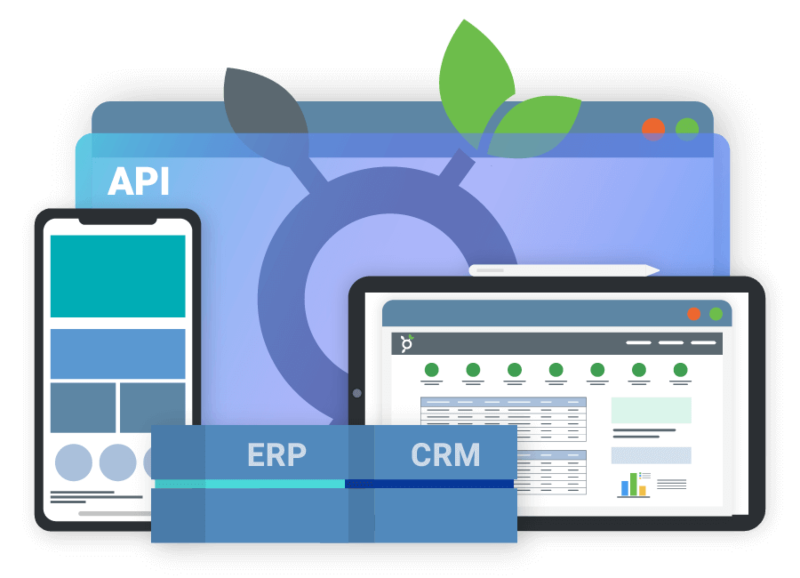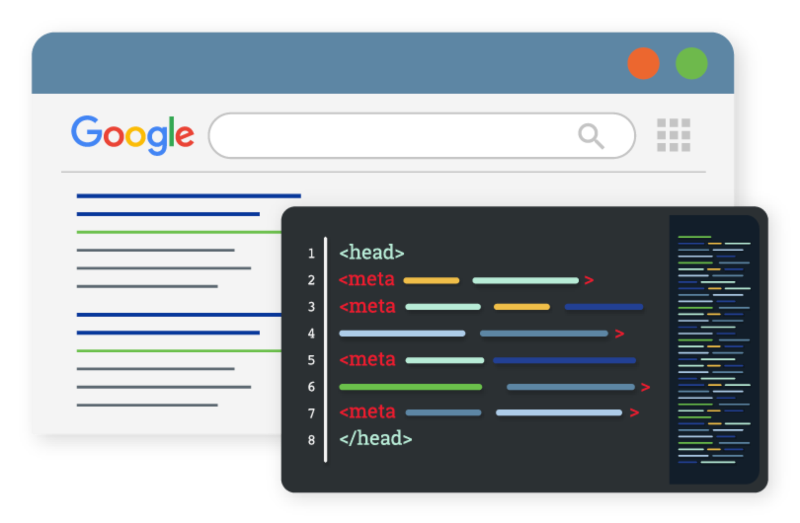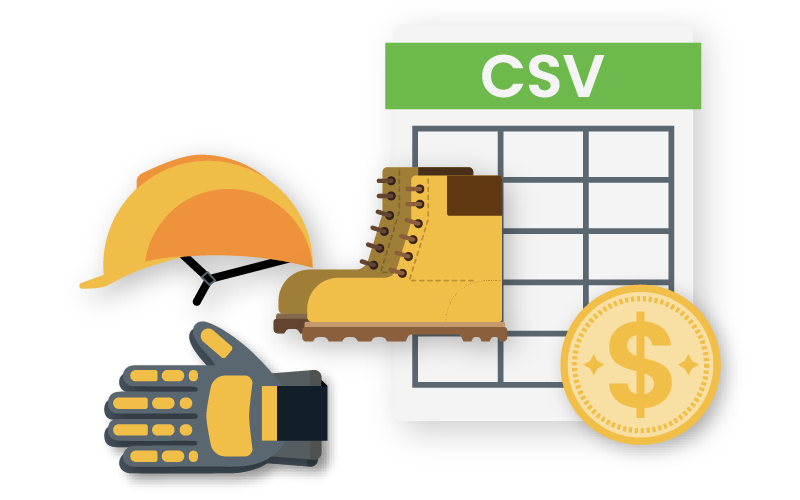the definitive guide to understanding multi-store ecommerce
As companies continue to transition to selling and servicing customers and channels online, the complexities and needs of brands continue to grow. This trend is fueling an increase in B2B ecommerce replatforming, and a demand for more flexible ecommerce solutions that can serve more audiences and connect to more systems and machines, without significantly increasing total cost of ownership and technical debt.
As the API economy booms, buzzwords like digital transformation and headless commerce are the rage, but most companies still struggle with managing basics such as customer, channel, or segment-specific catalogs, and multiple brand ecommerce stores, i.e. complex ecommerce. This guide examines how complex business models are being served through multi-store ecommerce, the criteria to evaluate the features for efficiently managing complex multi-store, multi-channel, multi-catalog ecommerce, and provides an analysis of popular platforms and capabilities.
Jump ahead:
- Requirements for Multi-store Ecommerce Environment Success
- Evaluating ‘Multi-store’ Ecommerce Platforms
- Multi-store Ecommerce Allows for Complex Business Models
- Questions to ask of Multi-store Ecommerce Platforms
- Think Sustainability for Long-term Multi-store Ecommerce Success
Complex Business Models and Multi-Store Ecommerce
B2X
Manufacturers and brands, to date, have typically chosen two paths for ecommerce. The first path being direct-to-consumer (D2C) or direct-to-customer with the acceptance of channel conflict. Essentially allowing consumers and customers (B2B) to find products and buy directly if an existing distributor relationship does not exist or in geographies where distribution and service are limited.
Distributors have also taken this approach attempting to move existing customers to buy and service online as well as attempting to attract new customers (within geographic constraints of distributor agreements) via ecommerce. These approaches to ecommerce attempt to use best practices of traditional B2C ecommerce such as a great user experience and tools to make the shopping journey easy such as sitesearch.
Some of the complexities of the B2X approach include pricing and segmentation. A D2C site may show MSRP pricing; however certain buyers may have negotiated pricing based upon existing contracts. Segmentation and showing the correct catalog(s) by segment also add complexity. These complexities only increase with multiple brands.
The second path manufacturers and brands have chosen is distributor portals allowing channels to order and self-service online. Often this ecommerce approach involves an ordering portal surfacing access to an ERP. This offered limited brand experiences, but was a fast way to order for experienced buyers.
While these traditional approaches sound simple, affordably managing D2C and B2B, including segments, is complex. This is multi-channel ecommerce and a clear use case for a multi-store ecommerce platform.
B2B2X
B2B2X ecommerce models are emerging as more manufacturers and wholesalers attempt to empower channels. These models can be B2B2B or B2B2C whereby the brand creates an ecommerce store on behalf of a channel or a customer specific ecommerce store, and the end customer buys from that ecommerce store. These business models are very common in the uniform industry and the promotional products industry and are growing in popularity in industries that have dealer networks.
B2B2X business models can be very complex to manage in an ecommerce environment. Customer stores with unique branding themes must also serve customer-specific pricing, content and product catalogs.
The Legacy Story
How are these complex business models being managed online today? Terms that may apply include:
- Chaos
- Hot mess
- Train wreck
- Yard sale
- Post-apocalyptic
Legacy platforms, legacy politics and legacy mergers have created this scenario at many companies. The typical story sounds a little something like this:
About ten years ago when a company decided to take the first step into ecommerce. At the advice of many analysts, the CIO chose one of the few established names in ecommerce such as Hybris or IBM Websphere (for example) or maybe a platform was homegrown. Ecommerce was still new, options were limited, and nobody ever got fired for choosing a big name. (Of course, IBM no longer owns an ecommerce platform.)
Then came a new opportunity in the market for the company, a new segment and a new set of products. Launching ecommerce on the legacy platform took too long and agile was a hot word. Marketing hired a consulting firm and implemented a popular open source platform like Magento (for example). Tech stack number two is established without any consideration for upgrades, site speed and performance, and total cost of ownership.
The year 2019 closes with an acquisition and as 2020 begins, new products are launched to new segments, and a pandemic hits. Digital is the only channel and speed-to-market trumps all. The leadership that came with the acquisition quickly launches three new stores on a SaaS platform like Shopify (for example). Tech stack number three is established.
Welcome to today. The economy is slow and leadership is wondering why five different ecommerce licenses exist. The new CIO is not happy having to manage data in three tech stacks and the COO now has one customer service team logging into five administration consoles to manage orders and needs to reduce headcount. The Head of Sales is wondering how to motivate an expensive sales team who have been replaced by equally expensive, disconnected technologies. Meanwhile, channels feel neglected.
Time to evolve. Time to replatform to one ecommerce platform that can manage multiple stores, catalogs and segments. This is multi-store ecommerce.
Requirements for Multi-store Ecommerce Environment Success
There are four primary areas that impact an ecommerce platform’s capabilities to deliver a multi-store environment:
- store management
- product information and catalog management
- user experience (UX)
- ecommerce operations management
Multi-store Management
General store management controls are required when running a multi-store ecommerce environment as each store commonly has its own brand, URL, contact touchpoints, and business rules.
The need for unique domain names depends greatly on the individual multi-store business case but multiple domain management should be more than just sub-domain capabilities to provide unique brand experiences and maximize search engine traffic opportunities.
Multi-store administration is very different depending on the ecommerce platform. There is the rare case where all websites’ and stores’ data can be accessed for administrative duties via one login. Those administrative duties include order management, customer management, and even content management. Not all responsibilities are accessible through a single login across three of the four multi-store ecommerce platforms audited. Consider the concept of user permissions via a single administration console rather than numerous logins and consoles as the sustainable solution.

PIM System / Multi-catalog Management
A common requirement of modern B2B ecommerce operations is the ability to manage product data within an ecommerce platform and to fulfill this requirement to the greatest extent a product information management (PIM) system is required.
Centralizing product information with a native PIM system within an ecommerce allows for product data processes to be executed quickly without the need for updating indexes as well as the ability to build custom product feeds and rapidly roll out product launches to multiple channels.
PIM systems can also allow for multi-catalog management including multiple catalog assignment to stores and the execution of customer and/or user segment catalogs. The primary benefit of a native PIM system vs. 3rd party PIM system is the cost and time required to integrate a non-native PIM to an ecommerce platform. A potential downside of a 3rd party PIM is the need to update indexes providing the opportunity for administration error and system latency.
Product attribution is another feature that impacts multi-store functionality when able to apply different attributes to both products and categories. Product attributes allow for the documentation and grouping of similar product characteristics. Attributes can also be rendered to specific profiles or users. Legacy platforms typically need technical resources and changes to the core database structure to create attributes. This is costly, time consuming and always impacts the upgrade process and sustainability of the platform.

Multiple Brand Experiences
Headless
When developing a multi-store ecommerce environment a headless ecommerce platform allows for maximum flexibility in user experience customization. Additional benefits of an API-first “headless” platform include easily managed integrations, typically seamless updates to platform capabilities (vs. upgrades), and the opportunity to decouple systems to future proof your ecommerce investment.

Search Engine Optimization
Search engine optimization (SEO) is also a content related component that must be considered when developing a multi-store ecommerce environment because how SEO data is structured in the platform can impact how individual stores are indexed by search engines.
Ecommerce platforms should be evaluated for core SEO components including the list below, with a focus on URL related items:
- Meta description
- Meta title
- URL slugs
- Image Alt Text
- XML Sitemap(s) & Robot Text
- 301 Redirects
- Schema.org
- Canonical URL Tags

Multi-everything (Ecommerce Operations)
Pricing Management
The first level of personalization in B2B ecommerce has always been pricing. Being able to reflect a customer’s tiered or contract level pricing is a confirmation step that users will likely receive the purchased goods.
There are several different pricing structures that are often required of multi-store ecommerce platforms. Those types of B2B ecommerce pricing include:
- pricing tiers
- customers/groups/segments pricing
- product price lists
- contract pricing
Additional pricing requirements can include the ability to store and display Manufacturer Suggested Retail Price (MSRP) and Manufacturer Advertised Price (MAP) for products.

Multi-store Considerations
An administrator can be held hostage by the capabilities of the ecommerce platform, meaning a multi-domain, multi-store, multi-catalog use case may impact the following components in different ways than a traditional single-channel ecommerce model. A multi-store platform must natively allow all traditional store entities to be uniquely applied at each individual store. Evaluate each carefully to ensure compliance with business requirements:
- Inventory
- Shipping
- Product information management
- Asset management
- Transactional messaging (email and SMS)
- Taxes
- Payments
- Order management (including quotes and returns)
- User, account and profile management
- Currency
- Languages
Multi-store Ecommerce Allows for Complex Business Models
Stack Sports
Stack Sports is the global leader in sports technology providing an integrated technology platform for national governing bodies, youth sports leagues, clubs and associations, parents, coaches and athletes with nearly 50 million users in 35 countries.
After launching a minimum viable product (MVP) to explore B2B2C ecommerce for uniform orders to youth sport leagues Stack Sports wanted to grow their offering.
Stack chose Znode’s headless architecture to fulfill its unique ecommerce needs as it would easily integrate into the existing application infrastructure and allow the company to scale and quickly go-to-market. The company was able to create a unique store and experience for thousands of youth sport leagues.
In less than six months, Stack successfully integrated Znode into its league management infrastructure. Znode allowed Stack to launch its new ecommerce business before the spring sports season. This ability to increase speed-to-market allowed the company to see an almost immediate ROI. Znode simplified and improved the ability to manage Stack’s growing inventory, creating happier internal teams and happier customers.
Questions to ask of Multi-store Ecommerce Platforms
- How does the platform manage multi-catalog assignments within a single website for the whole multi-store environment?
- Is there a limitation to the number of domains, not sub-domains, that can be managed for websites within the platform? How is platform pricing affected by the number of domains/websites utilized?
- If a business process dictates that product pricing is managed or can be overwritten by an ecommerce administrator how is that executed within the platform?
- Does the technology architecture of the platform allow for easy accessibility to critical API endpoints for future integration opportunities?
- What does the process of standing up a new store look like? How many steps, systems and teams are required to launch an MVP website?
Think Sustainability for Long-term Multi-store Ecommerce Success
When making an investment to develop a multi-store ecommerce environment, don’t take shortcuts. Evaluate a platform across all feature sets to ensure each component can address your business’s specific use case. Additionally contemplate the platform’s ability to serve beyond current business requirements for today and serving future states of the business as well. The digital path to purchase and ecommerce are not going away.


